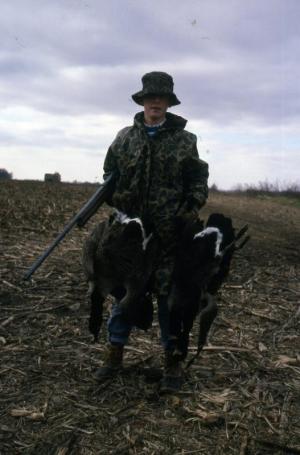I would like to tell you what you can expect to have in your fish box or your game bag in 2023, but unlike the bean counters at the National Oceanic and Atmospheric Administration and other government guessing agencies, all I can do is look at what was available in 2022, and hope the good numbers hold up and the bad numbers don’t get any worse.
As far as fishing, I think we will see pretty much the same activity that we had last year for summer flounder. The Mid-Atlantic Fishery Management Council and the Atlantic States Marine Fisheries Commission have voted for status quo, so we will continue with a 16-inch minimum size, four-fish bag limit and year-round season.
Bluefish will continue with the onerous three-fish bag limit for recreational fishermen who fish from shore or their boat, while the same recreational fisherman on a charter or head boat may keep five blues. This needs to change to allow all recreational fishermen to keep the same number of blues.
As for scup or porgies, the bag limit will remain at 50 fish and the size limit stays at 10 inches. Delaware anglers are beginning to catch more porgies every year, and this is a good thing. I hope this trend continues since we are taking a beating on black sea bass.
As I have said in previous articles, we will have another 10% cut in recreational black sea bass landings. More on exactly what that will mean when the final regulations are announced.
Croaker and white perch remain at an 8-inch minimum size and no bag limit. Spot have no size or bag limit.
Offshore anglers will have to wait until NOAA releases the regulations for the various tuna species. In recent years, the bluefins have come very close to shore feeding on bunker. Last year, there was a run of yellowfins at the Hudson Canyon that had Delaware boats running all the way up there either on their own bottom or on a trailer.
Offshore fishermen have a few things to be concerned with in 2023. The first is the idea to designate the Hudson Canyon as a Marine Protected Area. This idea could ban all fishing activity in the area. While the current proposal allows recreational fishing, we must stay alert for any backdoor skullduggery that would put us out of business.
Next is the 10-knot speed limit that may be imposed on all boats over 35 feet to protect right whales. If a charter boat must run at 10 knots from Indian River to the Baltimore Canyon, that would take 10 hours round trip. Trust me, no one wants to run into a whale, as they would probably sink the boat and cause injury to those on board.
Whales are killed when struck by big tankers and cargo ships, not by sport-fishing boats. Once again, the Greenies are going too far.
Then there are the waterfowl hunters, of which I was one in another lifetime.
After not seeing a single Canada goose during a ride north to Kent County, I contacted Gary Adam Macy, the Delaware state waterfowl biologist, who was kind enough to fill me in on what is going on with the geese. It seems there are two distinct subspecies of Canada geese in Delaware. There are Resident Canada Geese (non-migratory) and Atlantic Population Canada Geese (migratory).
The state conducts aerial surveys during the time the migratory geese are in Delaware (October to January), but since it is impossible to tell migratory from resident geese, they are all counted together.
The non-migratory geese have several advantages over the migratory geese. They have adapted to the surroundings and can find food with ease. Their clutch sizes are much larger than the migratory birds, and they are not as affected as much by climate change.
The migratory birds have also chosen to winter farther north than they did just a few years ago. This may be due to agricultural practices and weather.
Migratory geese have to contend with the resident birds plus the thousands of snow geese that winter in Delaware. In nature, there is no share and share alike. Also, I have noticed that many farmers are turning their corn fields into winter wheat much sooner than they did when goose hunting brought in lots of money. I still see photos on Facebook of guys with geese, but I suspect those are residents. When I do see waterfowl hunters, they are towing duck boats with decoys. Not a pickup with a bed full of stuffers.
I am sure 2023 will bring us lots of surprises. Once again, the weather will dictate when and where we can fish and hunt, just to let us know who is really the boss.























































